Greetings all,
I've been away for a while, spending most of the summer watching Patrick Andrews and Steve Smyers do the work on the South Course at Olympia Fields. I did have time for 2 kidney stones, which wiped out visits with Mike H., Ed G. and Lou Duran, though I did spend a day with Lou before being drugged up the second time.

The work on the South Course is complete. As many know, I was named Chairman of the Project by our Club President, Mike Drew, in May of 2006. My job was mostly to make sure we hit the budget, give tours of the course to the membership, and be the designee to be drowned in the irrigation pond if the membership hated it.

Still dry so far. There was a small committee that did just as much as I did to move things along, and so Andy Revell, Lou Weber, Mike Fagan and Brandt Oosterbaan should get big kudos, as well as the Grounds Chairman Dave Allard.
Before it started, I spoke to Shelly Solow and Pat Mucci and got an understanding of how these things go, and spoke to Shelly all along the project (he was also out there a couple times). Brad Klein also gave some invaluable advice. Given what I learned from them and know now, the work turned out better than I could have hoped. Patrick basically lived at the club during the project, and Steve was there almost weekly, and they both put their all into the project. Because there were significant changes to the course between 1916 and 1930, mostly for the better, and the course was a bit of a hodgepodge of bunker styles and other work, a true restoration was not in the cards. In the event, the work had elements of restoration in the green expansions and widening of fairway corridors, sympathetic renovation in the use of bunker styles and mounding evident in historic pictures, and complete renovation in constructing one completely new hole and on hole all new except for the green. Below are pictures of the most dramatic work.
First is the second hole. This is a par 4, 410 or so from the regular tees, with a downhill second shot. Here is what it looked like before the work:
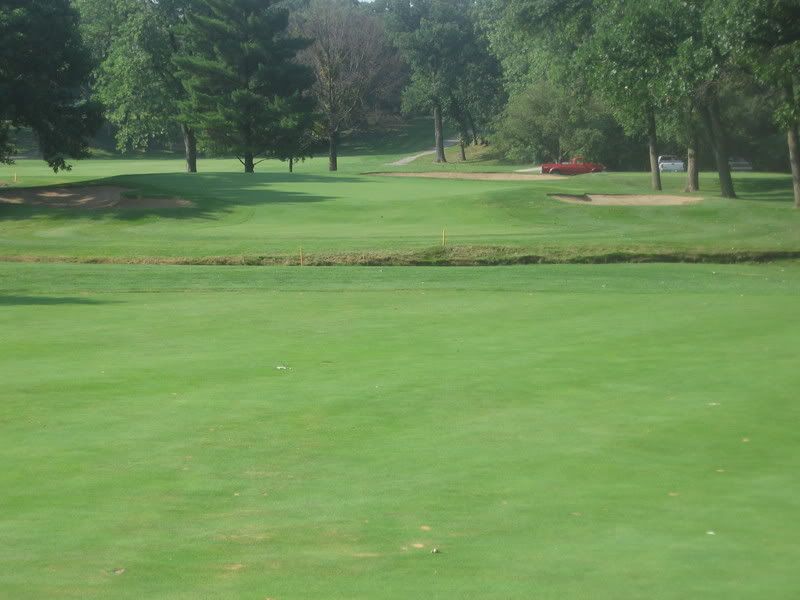
As you can see, the bunkers have been edged to the top and have sand all the way up. Here, Patrick and Steve dug out the sand until they reached the bottom and established grass faces. They also eliminated the back right bunker, the Pine Trees (all over the course) and expanded the green. Here is what it looks like:
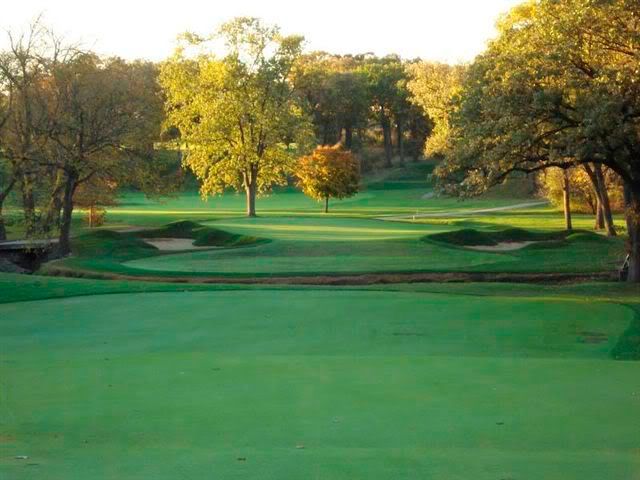
The 3rd hole is completely new. The old 3rd was a flat 160 yard par 3 with a green that flooded every year. It was redone several times, and its place in a flood way limited what could be done. To the left of the hole is a hill with trees and scrub on it. Steve and Patrick came up with the idea of re-orienting the hole and putting the green on top of the hill. The pic I have isn't great, and the green is inside the orange fence, put up to keep deer out. to the right is a very steep dropoff similar to "the kitchen" to the right of the 6th hole:
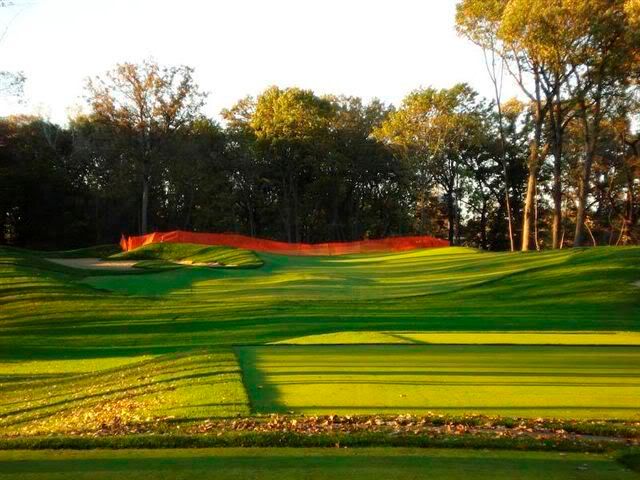
Here is an image of the green from the back looking forward, with some pretty good contours and a fall off to the back left (right in the picture):

Here is the green being cut for the first time a couple months ago:
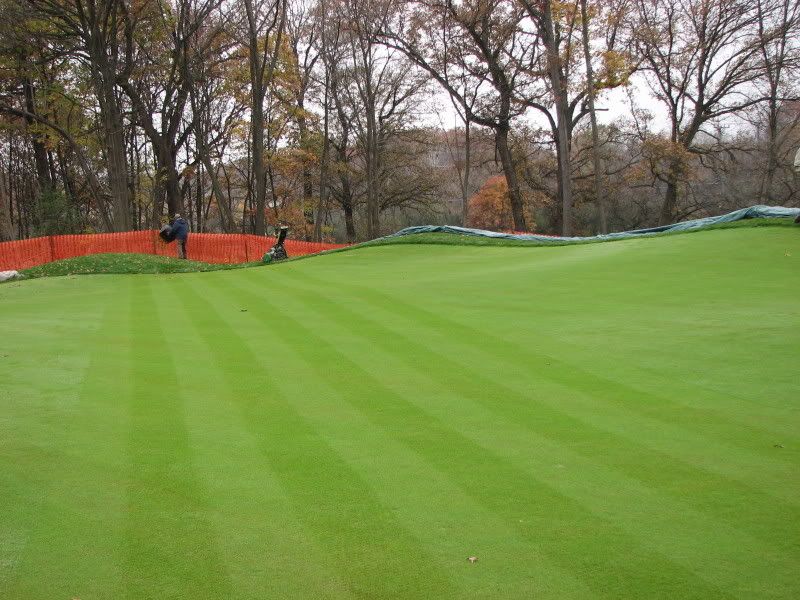
And here is the view looking back to the tee, showing that if is pretty uphill. This makes the course on of few I know with 2 uphill par 3s (the 12th is the other, with the green set on the edge of a 15 foot hill).

The biggest other change is to the 13th hole, a dogleg left par 4 in a field out of character with the rest of the course. This is what it looked like:
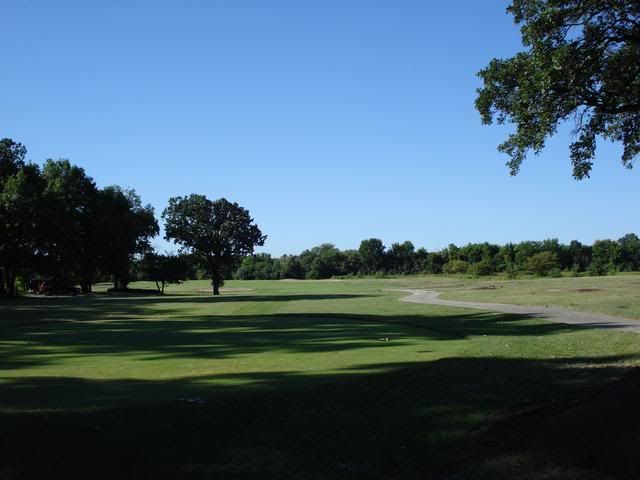
Patrick and Steve dug out a creek on the left (which you can't see in the pic), which will be receiving runoff from outside the property during heavy rains. The creek will clean the water, which previously contaminated our irrigation pond with gunk. They used the fill to build a ridge on the right, and exaggerated the dogleg. The land moves gently from the ridge down to the bunkers (which again have mounding in the faces), so that the closer you get to the bunkers the flatter the lie. This is important because the green slopes bigtime to the back left, not easy to hit with a hook lie. Here is the result:
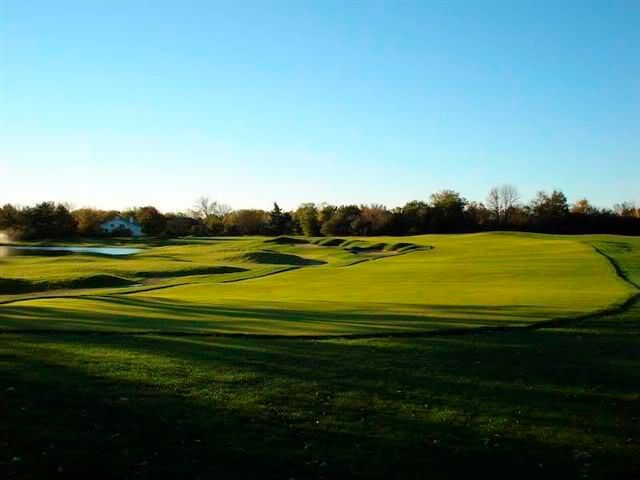
Last, the short par 3 14th. It originally was surrounded by bunkers that appear deep and below the green, and very steep. There is also significant chocolate drop mounding behind the green:
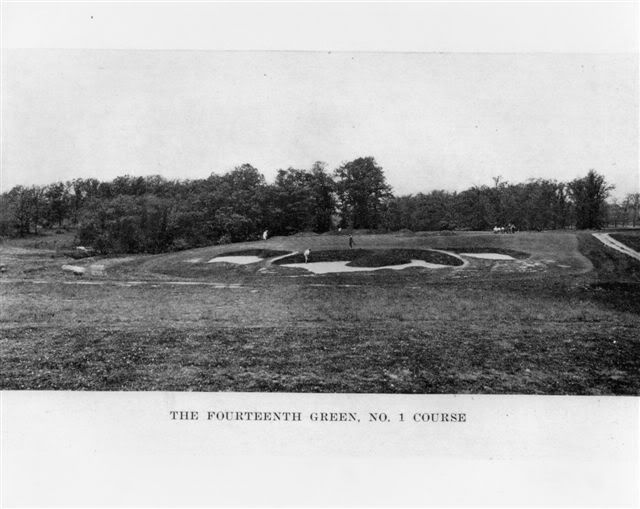
Here is what the hole looked like this year before the work:
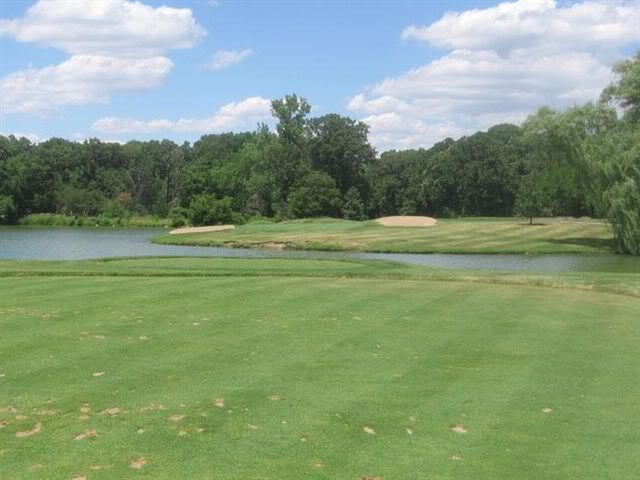
As you can see, the irrigation pond is now in front and to the left of the hole, making it impossible to go back. Patrick and Steve wanted to restore the historic bunker pattern, but went up instead of down, using the mounding style evident elsewhere on the course. This picture is a bit distorted, but shows the work:
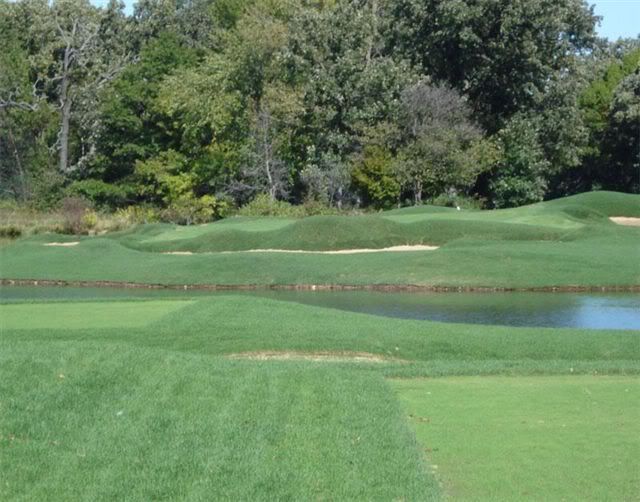
2 things you can't see from pics are the great green expansions, which brought back a ton of great hole locations, and the tree work, which eliminated awful Pine trees and exposed great old speciment oaks, along with giving the course great vistas.
As I said, Steve and Patrick put their all into the work. Wadsworth Golf Construction did the work, and they were terrific, bringing in more folks when we got behind, and keeping me informed well in advance of potential cost overruns. Tony Altum designed the new irrigation system, and Liebold put it in, both right on budget. Huge kudos go to Sam Mackenzie, our Director of Grounds, his crews for his overall management of the project and their willingness to work their asses off to catch up after the rains. Sam did all the green expansions and grassing, and those guys were out there till (and past) dark many nights, all while keeping the North Course in the best shape anyone can remember even though it got the most play anyone can remember (note to Ryan P: Sam's contract prohibits him from setting foot in Dupage County until 2050

, and our 2 USGA greens on the North Course are fine now).
The reopening of the course is completely dependent on the weather, but we hope to open sometime around Memorial Day. I'll post some more photos when I get them, and also hope to write a more detailed piece on the project for Ran to post.
Jeff Goldman